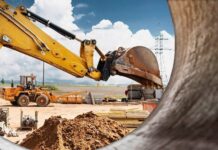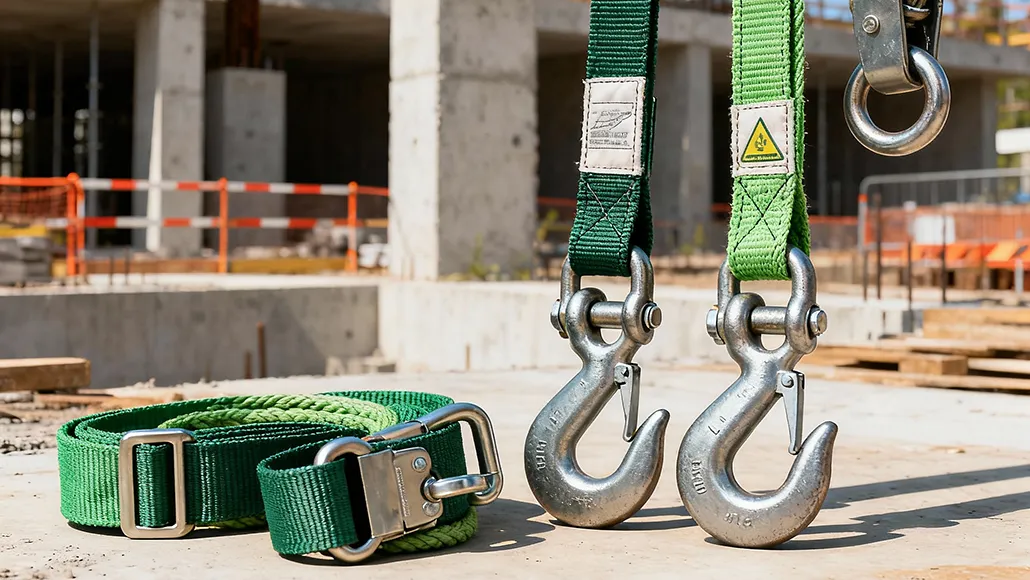Sustainable Materials Enhancing Lifting Gear Longevity
The construction and industrial lifting sectors face mounting pressure to balance operational demands with environmental responsibility. Equipment longevity, maintenance efficiency, and resource conservation have emerged as critical priorities that directly impact both profitability and sustainability. Within this context, sustainable materials lifting gear longevity has become a focal point for manufacturers and operators seeking to extend service life while reducing environmental footprints. Advanced materials science, coupled with innovative coating technologies, now offers solutions that significantly enhance equipment performance and durability.
The Imperative for Sustainable Lifting Solutions
Traditional lifting gear—including wire rope slings, chains, synthetic webbing, and structural components—has historically prioritized immediate performance characteristics such as load capacity and initial cost. However, this approach often overlooked the total lifecycle implications, including maintenance frequency, replacement intervals, and end-of-life disposal. The cumulative environmental impact of frequent equipment replacement, coupled with the resource intensity of manufacturing processes, has prompted the industry to reconsider its material choices and design philosophies.
The shift toward sustainable materials lifting gear longevity reflects broader recognition that durability and environmental stewardship need not conflict. Materials that resist wear, corrosion, and degradation extend operational lifespan, reducing the frequency of replacements and the associated consumption of raw materials and energy. This alignment of economic and environmental interests creates compelling motivation for adopting advanced sustainable materials across lifting applications.
Modern lifting operations occur in increasingly demanding environments. Offshore installations expose equipment to salt spray and humidity. Chemical processing facilities subject lifting gear to corrosive substances. Mining operations generate abrasive dust that accelerates wear. Construction sites present variable loading conditions and exposure to weather extremes. Each environment challenges traditional materials, often requiring premature replacement that increases costs and environmental impact.
Advanced Material Innovations
The development of high-performance synthetic fibers has revolutionized lifting sling applications. Materials such as ultra-high-molecular-weight polyethylene have demonstrated exceptional strength-to-weight ratios while offering superior resistance to abrasion, chemicals, and fatigue. These synthetic alternatives often outlast traditional materials by substantial margins, with some applications reporting service life extensions exceeding 400 percent compared to conventional options.
Dyneema fiber represents a notable example of this technological advance. Originally developed for marine applications, this material has found extensive use in heavy lifting slings for offshore energy, construction, and industrial applications. The fiber exhibits remarkable properties: three times the fatigue lifetime of generic alternatives, four times longer rope abrasion resistance, and superior strength retention at elevated temperatures. These characteristics translate directly to extended service intervals and reduced lifecycle costs.
The environmental advantages of synthetic lifting materials extend beyond longevity. Their lighter weight compared to steel alternatives reduces energy consumption during transportation and handling. Manufacturing processes for advanced synthetics increasingly incorporate bio-circular feedstocks, further reducing carbon footprints. At end of life, many synthetic materials offer recycling possibilities that recover value and prevent landfill disposal.
Alloy development for metallic lifting gear has similarly progressed. High-grade alloy steel chains now feature enhanced chemical compositions that improve hardness, wear resistance, and fatigue performance. Grade 100 and higher alloy chains demonstrate increased strength-to-weight ratios and improved work load limits compared to earlier generations. These metallurgical advances allow lighter equipment to handle heavier loads while maintaining safety margins, reducing material consumption without compromising performance.
Protective Coating Technologies
Surface treatments and protective coatings play crucial roles in sustainable materials lifting gear longevity by defending base materials from environmental degradation. Corrosion represents a primary failure mechanism for metallic lifting components, particularly in marine or industrial chemical environments. Advanced coating systems create barriers that prevent moisture and reactive substances from reaching metal surfaces, substantially extending equipment life.
Powder coating technology has emerged as an environmentally preferred alternative to traditional liquid coatings. These systems apply electrostatically charged powder particles that bond to metal surfaces during thermal curing. Powder coatings eliminate volatile organic compound emissions associated with solvent-based alternatives while providing superior thickness uniformity and edge coverage. The resulting protective layer demonstrates excellent resistance to chipping, scratching, and corrosion, extending the service life of chains, hooks, and structural components.
Ceramic and composite coatings offer additional protection for extreme environments. These advanced systems withstand higher temperatures, resist chemical attack, and provide exceptional abrasion resistance. Applications in steel mills, foundries, and chemical plants benefit from coatings that maintain integrity under conditions that would rapidly degrade conventional protective systems. The extended protection intervals reduce maintenance frequency and defer replacement, contributing to both economic and environmental objectives.
Corrosion-inhibiting compounds applied during manufacturing and maintenance further enhance sustainable materials lifting gear longevity. These treatments penetrate material surfaces, forming protective layers that prevent oxidation and degradation. Regular reapplication during maintenance intervals maintains protection, allowing equipment to achieve service lives that approach theoretical limits rather than succumbing to premature environmental damage.
Design Philosophy and Material Optimization
Sustainable lifting gear design extends beyond material selection to encompass holistic approaches that optimize resource utilization. Manufacturers increasingly employ finite element analysis and computational modeling to identify stress concentrations and optimize material distribution. This analytical approach allows thinner profiles where loading permits while reinforcing critical areas that experience higher stresses. The result: components that use less material while maintaining or exceeding performance standards.
Modular design principles contribute to sustainability by enabling component replacement rather than complete equipment disposal. Lifting systems designed with replaceable wear elements allow operators to refresh high-stress components while retaining structural elements that remain serviceable. This approach extends overall system life while minimizing material consumption and manufacturing energy requirements.
Material selection increasingly considers not only performance and longevity but also recyclability and environmental impact throughout the supply chain. Manufacturers evaluate raw material extraction methods, processing energy requirements, transportation distances, and end-of-life recovery potential. This comprehensive assessment ensures that sustainable materials lifting gear longevity encompasses the entire product lifecycle rather than focusing narrowly on operational phase performance.
Maintenance Practices Supporting Longevity
Even the most advanced materials require appropriate maintenance to achieve their longevity potential. Systematic inspection protocols identify wear, damage, and degradation before they compromise safety or force premature retirement. Regular visual examinations supplemented by detailed inspections catch problems early, allowing corrective actions that extend service life.
Proper cleaning removes contaminants that accelerate wear and corrosion. Lifting gear exposed to abrasive dust, corrosive chemicals, or salt spray benefits from systematic cleaning that prevents buildup of damaging substances. Mild detergents and water suffice for most applications, while specialized cleaning agents address stubborn residues without damaging base materials or protective coatings.
Lubrication programs maintain flexibility and protect against friction wear in wire rope slings and mechanical components. High-quality lubricants reduce internal friction, prevent rust formation, and maintain smooth operation that extends component life. Application frequency depends on operating environment and usage intensity, with harsh conditions warranting more frequent lubrication.
Storage conditions significantly influence lifting gear longevity between use cycles. Equipment stored in clean, dry, well-ventilated areas experiences minimal degradation during idle periods. Protection from direct ground contact, moisture exposure, and extreme temperatures preserves material properties and coating integrity. Organized storage systems prevent tangling and mechanical damage while facilitating regular inspections.
Economic Advantages of Sustainable Approaches
The economic case for sustainable materials lifting gear longevity extends beyond initial purchase decisions to encompass total cost of ownership. Extended service life amortizes equipment investment over more operational hours, reducing per-use costs despite potentially higher initial acquisition prices. This economic advantage becomes particularly pronounced for equipment experiencing intensive utilization or operating in harsh environments where conventional materials require frequent replacement.
Reduced maintenance frequency lowers ongoing operational expenses. Equipment demonstrating superior resistance to wear and environmental degradation requires fewer inspections, less frequent cleaning, and reduced protective treatment reapplication. The labor and material costs avoided through maintenance reduction often equal or exceed savings from extended replacement intervals.
Operational continuity benefits generate additional economic value. Equipment failures and premature retirements disrupt construction schedules, cause project delays, and necessitate emergency replacements at premium costs. Sustainable materials that reliably deliver extended service reduce these disruptions, maintaining productivity and avoiding the cascade of consequences that follow unexpected equipment unavailability.
Insurance and liability considerations increasingly favor sustainable lifting approaches. Documented maintenance programs combined with equipment demonstrating proven longevity and reliability may qualify for favorable insurance terms. The safety advantages of using well-maintained, long-life equipment reduce accident risks and associated liability exposure.
Environmental Impact and Industry Responsibility
The construction and industrial sectors face growing expectations to demonstrate environmental stewardship. Sustainable materials lifting gear longevity directly addresses this imperative by reducing resource consumption, minimizing waste generation, and decreasing the carbon footprint associated with equipment manufacturing and replacement.
Manufacturing lifting gear consumes substantial energy and generates emissions. Steel production, alloy processing, and synthetic fiber creation all require significant energy inputs and produce greenhouse gases. By extending equipment service life, the industry reduces demand for new production, proportionally decreasing associated environmental impacts. When equipment serves twice its conventional lifespan, the per-year environmental cost effectively halves.
Waste reduction represents another environmental benefit. Retired lifting gear often enters landfills, consuming disposal capacity and sequestering materials that might otherwise return to productive use. Extended service life defers this waste generation, while improved end-of-life recovery systems increasingly enable material recycling that recaptures value and prevents disposal.
Transportation energy constitutes a non-trivial component of lifting equipment’s environmental footprint. Equipment manufactured overseas or in distant domestic locations requires substantial fuel consumption for delivery. Longer-lived equipment reduces replacement frequency and the associated transportation burden, contributing to carbon footprint reduction.
Future Trajectories in Sustainable Lifting Materials
Research and development continue advancing sustainable materials lifting gear longevity through multiple avenues. Nanotechnology applications promise surface treatments that further enhance wear resistance and environmental protection. Self-healing materials that repair minor damage autonomously may extend service life beyond current capabilities. Advanced composites combining multiple material types could deliver unprecedented performance characteristics.
Circular economy principles increasingly influence material selection and equipment design. Manufacturers explore take-back programs that recover retired equipment for refurbishment or material recovery. Design for disassembly approaches facilitate component separation and recycling at end of life. These systemic changes position lifting equipment as temporary material custody rather than linear consumption, fundamentally altering environmental impact.
The integration of smart sensors and monitoring systems enables condition-based maintenance that optimizes equipment utilization while ensuring safety. Real-time wear detection allows maximum service extraction without risking premature failure. This data-driven approach to equipment management complements material advances, ensuring that sustainable materials achieve their full longevity potential.
The convergence of advanced materials science, sophisticated coating technologies, and refined maintenance practices establishes new benchmarks for lifting equipment performance and environmental responsibility, demonstrating that operational excellence and sustainability represent complementary rather than competing objectives.































